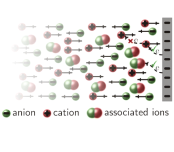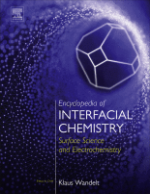
Temperature-Dependent Transport Properties of a Redox-Active Ionic Liquid with a Viologen Group
The paper authored by
N. Bodappa, P. Broekmann, Y.-Ch. Fu, J. Furrer, Y. Furue, T. Sagara, H. Siegenthaler, H. Tahara,
S. Vesztergom,
K. Zick and Th. Wandlowski
is published in Journal of Physical Chemistry C (2015, vol. 119, pp. 1067–1077).
Abstract:
A redox-active ionic liquid (IL), 1-butyl-1'-heptyl-4,4'-bipyridinium bis(trifluoromethanesulfonyl)imide, has been synthesized and its transport processes were investigated. The conductivity and viscosity of the IL, as well as the diffusion coefficients of its components were studied over a 50 °C wide temperature range: for the diffusivity studies, both the pulsed-gradient spin–echo (PGSE)–NMR technique and voltammetric measurements have been applied. The measured data are presented in the paper and are compared to each other. It was found that the diffusion coefficients determined by means of NMR and chronoamperometry measurements are, within the range of experimental error, equal—and they are (in accordance with other ionic liquid studies) higher than what the conductivity or viscosity measurements indicate. The results are interpreted in the light of the existing theories. The measured diffusion coefficients and bulk conductivities can be well interrelated based on the “ionicity” concept (that is, by treating the ionic liquid as a weak electrolyte). In agreement with the empirical Walden rule, a direct comparison between the measured conductivities and viscosities is also possible, for which a hole conduction model is utilized. Based on the fact that both the electrochemical and the NMR measurements yield practically the same diffusion coefficients in the system, there is no evidence that interpretations based in other redox-active IL systems on “homogeneous electron transfer” apply to the system studied here.
